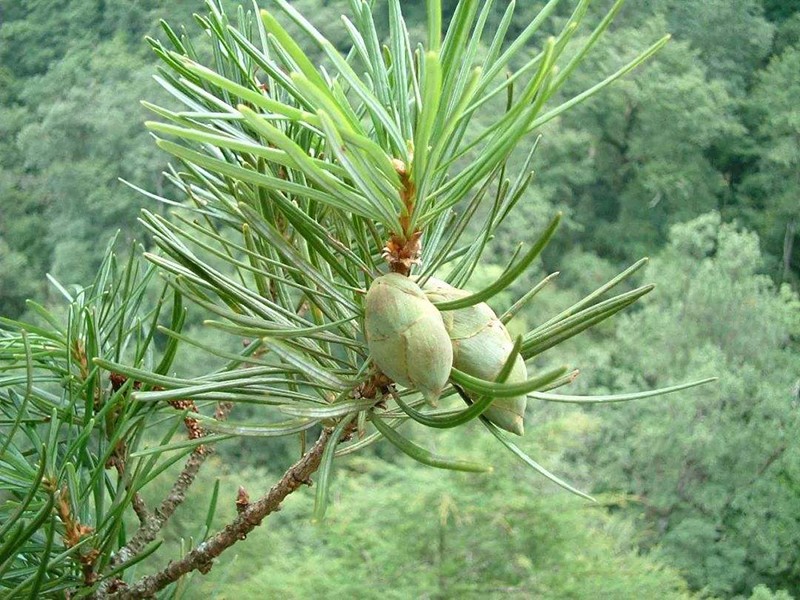- Homestay
- Qi Xin Xiaozhu culture originated
- Qí xīn xiǎo zhù
- Inhabiting
- Tourist
- Butler service
- specialty


Introduction: Silver fir is a genus of Pinus sylvestris, a rare species of Chinese specialty. Together with metasequoia and ginkgo, it is known as the “national treasure” of the plant kingdom and protects plants at the national level. There are two seeds on it, with long oval wings.
Basic information: silver fir, pine cedar; pine family; larch subfamily; plant kingdom; cedar genus; gymnosperm plant;
Morphological characteristics: Silver fir, gymnosperm, and pine family are evergreen trees with a height of ten to twenty meters. The breast diameter is 40 cm or more. The bark is dark gray and cracks into irregular sheets when old. The large branches are flattened, and the upper end of the branchlets grow slowly and thickly, or a few lateral branches are dead due to the death of the top buds. [1] The annual branches are yellowish brown, densely grayish yellow and pubescent, gradually falling off. The two-year-old branch is dark yellow. The leaf pillow is nearly strip-shaped, slightly raised, and the tip has a nearly round, round or nearly square-shaped leaf mark, and its color is light. Winter buds ovoid or conical, apically apically, yellowish brown, glabrous, usually 6-8 mm long. The leaves are spirally shaped to form a radiation stretch, arranged closely at the upper end of the branches, clustered, and scattered on the underside, mostly 4-6 cm long, 2.5-3 mm wide, marginal micro-revolution, on the cross-section The two ends are round, and there are extremely prominent pink-white vents along the middle of the vein. Each vent has 11-17 rows of vents, and the stomata is generally wider than the light green rim. The internodes of the lateral branches are shorter, the leaves are arranged densely, the upper leaves are dense, and the rounds are clustered. Most of them are no more than 3 cm long, and the edges are flat or nearly flat. The ends are obliquely pointed on the transverse plane, and the white powder is white. The vent has 9-13 rows of vents, and the width is nearly equal to the sideband. Leaf strips, many spurs curved or straight, apex rounded, base gradually narrowed into inconspicuous petiole, dark green on top, pubescent, densely pubescent. The young leaves have more hair on them, and there are eyelashes along the edge of the leaves. The eyelashes will fall off soon, leaving only traces.
Male flower ovate ovate, ca. 2 cm long, ca. 8-9 mm, sessile-lanceolate, 5--6 cm long, subulate, sessile sessate The back is convex, the edge has irregular serrations, the inner cymbal is larger, broadly ovate, 6-8 mm long, 4-5 mm wide, and the outer cymbals are mostly triangular oblate, supporting The deformed leaves of the base are soon detached, the stamens are yellow, about 6 mm long; the base of the female globose is bract-free, ovoid or oblong-ovate, 8-10 mm long, ca. 3 mm, nearly globose. Shape or kidney-like oblate, yellow-green, squama yellow-brown, triangular oblate or triangular-ovate, apex long-tailed, unequal, serrate.
Cones green before ripening, ripening from maroon to dark brown, oval, long oval or oblong, 3-5 cm long, 1.5-3 cm in diameter, 13-16 species, nearly round or With an oblate to ovate-shaped shape, 1.5-2.5 cm long and 1-2.5 cm wide, the back (especially the covered part) is densely viscous pubescent; the scale is 1/1 of the scale 4-1/3; seeds slightly flat, obliquely ovoid, base tip, 5-6 mm long, 3-4 mm in diameter, olive green with dark green, irregular light-colored markings, winged membranous, yellow Brown, asymmetrical elliptical or elliptical obovate, 10-15 mm long and 4-6 mm wide.